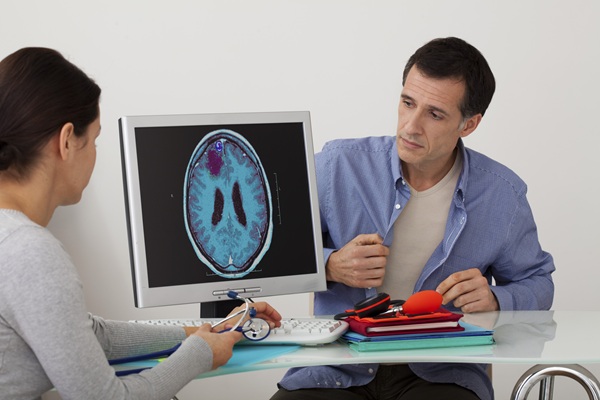Spinal Stenosis Treatment From a Neurosurgeon

Spinal stenosis is a condition that affects millions of individuals worldwide, primarily those over the age of 50. It occurs when the spaces within the spine narrow, putting pressure on the spinal cord and nerves. This spinal disorder can lead to pain, weakness, and reduced mobility, causing a severe impact on a person's quality of life. Fortunately, neurosurgeons offer a variety of non-surgical and surgical treatment options that can make everyday life easier for those with this debilitating spinal disorder.
Non-surgical interventions
Physical therapy and exercise
Regular physical therapy and exercise are first-line treatments recommended for reducing symptoms of spinal stenosis. Physical therapy can introduce patients to multiple exercises and movements to help correct posture, stretch the lower back and limbs, and strengthen the core and trunk. These exercises can also aid in weight loss, taking pressure off their back and improving their spinal stenosis symptoms and mobility.
Medications
Nonsteroidal anti-inflammatory drugs (NSAIDs) and pain relievers can effectively reduce inflammation and provide temporary relief from the pain associated with spinal stenosis. Patients can also use topical agents like lidocaine, menthol, camphor, and capsaicin. However, long-term use should be monitored and discussed with a healthcare provider.
Epidural steroid injections
For patients with severe pain, epidural steroid injections can provide significant relief. This minimally invasive procedure involves injecting a corticosteroid medication into the epidural space to reduce inflammation around the affected nerves. However, the effectiveness of this treatment varies based on the cause and severity of the patient's spinal stenosis symptoms.
Surgical interventions
Decompression
Decompression is a term that describes surgical techniques designed to relieve pressure from nerves or the spinal cord. A neurosurgeon can help determine the appropriate procedure based on the compression's location. Some of these procedures include:
- Laminotomy. A laminotomy is where a neurosurgeon removes a portion of the vertebral bone (lamina). They can then access the spine and remove bone spurs, ligaments, or cartilage constricting the nerves. The surgeon can do this by making a small incision in the back or neck and inserting a tube near the affected vertebra.
- Laminectomy. This procedure is where a neurosurgeon removes a portion of the vertebral bone (lamina) to create more space for the spinal cord and nerves. This can alleviate pressure and relieve symptoms.
- Discectomy. Discectomy involves the removal of the injured part of a bulging or herniated disc, relieving pressure on the nerves or spinal cord. There are two types of discectomy, an open procedure that involves making an incision directly into the disc or a minimally invasive procedure called a microdiscectomy that involves making small incisions and using tiny instruments to access the disc. Both methods can remove disc fragments from the lower spine or neck.
Spinal fusion
For patients with spinal stenosis and instability in the spine (spondylolisthesis), neurosurgeons can perform a spinal fusion to correct the misalignment. During this procedure, the surgeon permanently joins unstable vertebrae using metal crews and rods. These screws and rods remain in the patient's spine and act as a brace to keep it in the correct position.
In some cases, the surgeon can also insert a small piece of living bone material, or bone graft, between the vertebrae. This bone graft can be from the patient's body (typically the hip) or a donor at a bone bank. The graft can be placed directly between the fused vertebrae or inside a small metal cage before the surgeon places it on the spine, providing additional stability.
Over time, the jointed vertebrae will heal, fusing into one bone mass. This gives the spine the flexibility and stability needed to support the body. It also helps prevent pain caused by slipped vertebra pushing against nerve roots or the spinal cord.
Schedule a consultation
Spinal stenosis can significantly impact a person's quality of life. With the right treatment method, they can manage it effectively. Whether through non-surgical or surgical interventions, there are multiple treatment options available. It is important to schedule a consultation with a qualified neurosurgeon to determine the most effective treatment method for your needs. Call our office today to learn more or schedule an appointment.
Request an appointment here: https://arizonaneurosurgeon.com or call Randall Porter, M.D. at (602) 603-8951 for an appointment in our Phoenix office.
Check out what others are saying about our services on Yelp: Spinal Stenosis in Phoenix, AZ.
Recent Posts
Brain metastases are a serious medical condition where cancer cells spread from a primary tumor to the brain. They are more common than primary brain cancer tumors and can indicate an advanced stage of systemic cancer. This condition can significantly affect your quality of life and requires professional diagnosis and treatment.Brain metastases occur when cancer…
Facial reanimation is a specialized surgical approach designed to restore movement and expression in individuals affected by facial paralysis. This condition may result from trauma, nerve injury, tumor removal, or conditions such as Bell’s palsy. Facial reanimation combines microsurgical techniques, nerve grafting, and muscle transfers to improve function and appearance. When performed by a skilled…
Brain surgery is a complex and delicate procedure. It requires strict aftercare to ensure optimal recovery and few complications. Following the advice of your brain surgeon can help aid your healing process and make your long-term treatment a success. Here are some general tips from Randall Porter, M.D. team to help patients and their caregivers…
Considering undergoing back pain treatment from an experienced chiropractor? There are many different types of back pain one can experience. There are also many different types of back pain treatments available from a chiropractor. While back pain is more common as one gets older, anyone can experience back pain. The most common cause of back pain…


